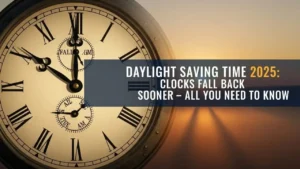Washington, US:In a surprising shift highlighted by new polling data, a majority of American voters now believe the Democratic Party has lost touch with ordinary citizens calling the party’s recent direction “too extreme.” The sentiment isn’t confined to conservatives alone; independents and even some Democratic voters are voicing frustration over what they see as unrealistic priorities and divisive rhetoric coming from the left.
Growing Discontent Among Voters
Recent national discussions have revealed deep voter unease, particularly regarding progressive figures like Representative Alexandria Ocasio-Cortez, commonly known as AOC. Once celebrated for her unapologetic activism and media influence, AOC now faces a growing perception that her vision ranging from climate mandates to economic reforms does not align with mainstream America’s values.
Voters surveyed believe Democrats have overemphasized issues such as identity politics, costly social programs, and environmental rules that, they say, hurt working families. Many Americans who supported the party during previous elections are now questioning whether today’s Democrats understand their everyday struggles amid rising inflation and global uncertainty.
Also Read
Swing Voters Drive a New Narrative
The shift is most visible among swing voters and moderates who once leaned Democratic but now describe the party as disconnected. Political analysts observe that these voters crave practical policies—strong borders, affordable energy, and personal freedom—over idealistic proposals that seem detached from reality.
Across suburban and rural communities, people express exhaustion with cultural conflicts and political correctness dominating national debates. In interviews and town hall events, they report feeling ignored by leaders who, they believe, dismiss genuine concerns in favor of scoring ideological points.
A Challenge to the Party’s Future
Party insiders privately acknowledge the growing rift. Some strategists warn that the Democrats’ focus on “activist policymaking” could lead to further losses in upcoming elections if the leadership fails to reconnect with moderates. The warning signs became apparent in several state-level races where once-safe blue districts turned unexpectedly competitive.
Longtime campaign observers recall that successful Democratic eras—from Bill Clinton’s centrism to Barack Obama’s pragmatic coalition—thrived because of a focus on kitchen-table issues. The current drift, they argue, risks alienating that critical base needed to win national elections.
The AOC Effect
Representative Ocasio-Cortez remains a lightning rod within this narrative. Her social media presence keeps her influence strong among younger voters, but her critics say her version of progressivism is pushing the party toward unelectable extremes. Proposals like the Green New Deal and sweeping economic redistribution are often cited as examples of what voters now label “going too far.”
Even within her own party, some members have begun urging a reset—a return to economic pragmatism and common-sense governance. They argue that focusing solely on ideological purity weakens the Democrats’ ability to compromise and govern effectively.
A Nation Seeking Balance
The public mood suggests a national appetite for moderation. Americans appear weary of both partisan extremism and performative politics. Many want cooperation over confrontation and results over rhetoric. Surveys indicate that issues like border management, inflation, and public safety rank far above the identity and climate debates dominating headlines.
If Democrats hope to regain momentum before the next election cycle, strategists say they must listen to these shifts. Voters crave leaders who speak plainly about economic growth, community values, and national unity—without preaching ideology or assigning blame.
A Reckoning on the Horizon
Political watchers describe this moment as a potential turning point. The Democratic Party faces a test of identity: whether to double down on activist ideals or adapt to the centrist realities shaping voter sentiment.
President Trump’s administration continues to capitalize on that divide, emphasizing stability, border control, and traditional values. His message resonates with Americans frustrated by cultural clashes and rising living costs, providing a stark contrast to the progressive vision many now view as impractical.
Conclusion
The growing belief that Democrats have “gone crazy,” as echoed in public forums and polls, may signal a broader shift in American politics. For the first time in years, progressive energy is encountering serious public resistance. Whether the party recalibrates or continues down its current path will determine its future and possibly the country’s political balance for years to come.












